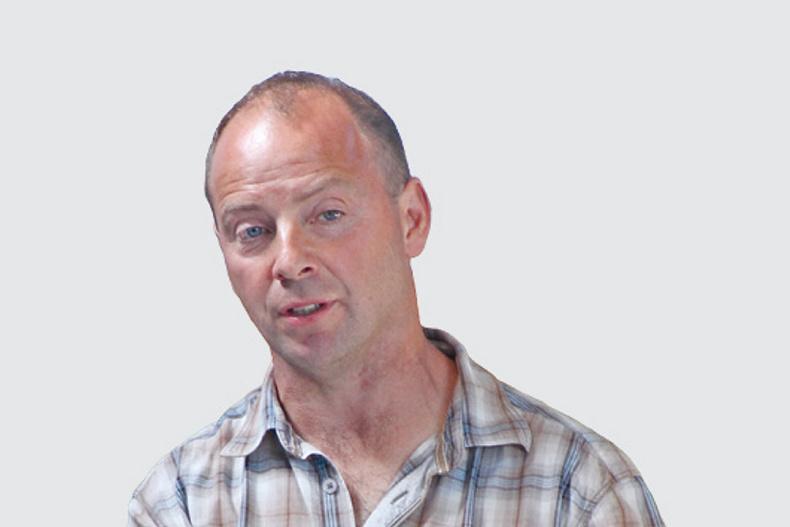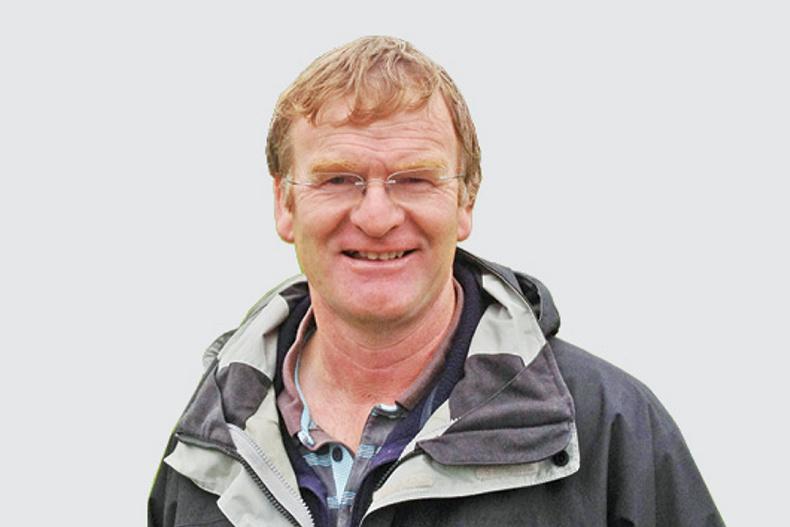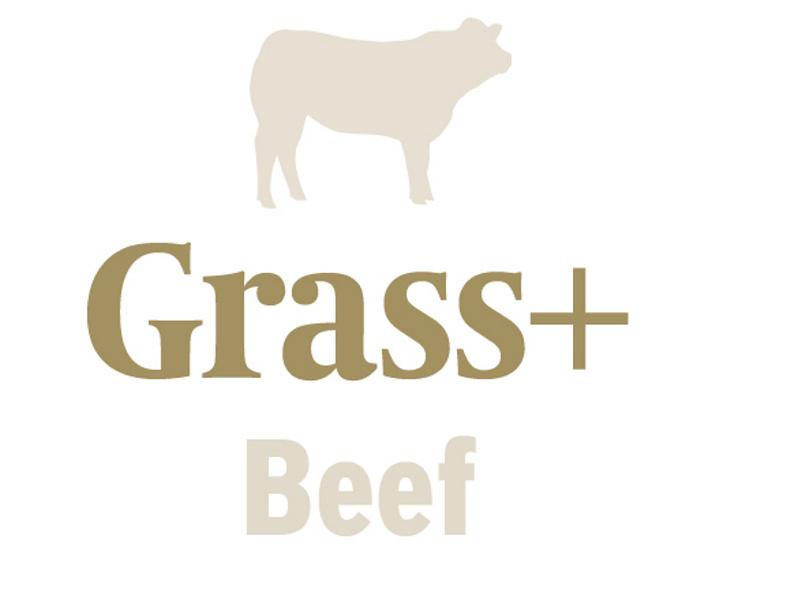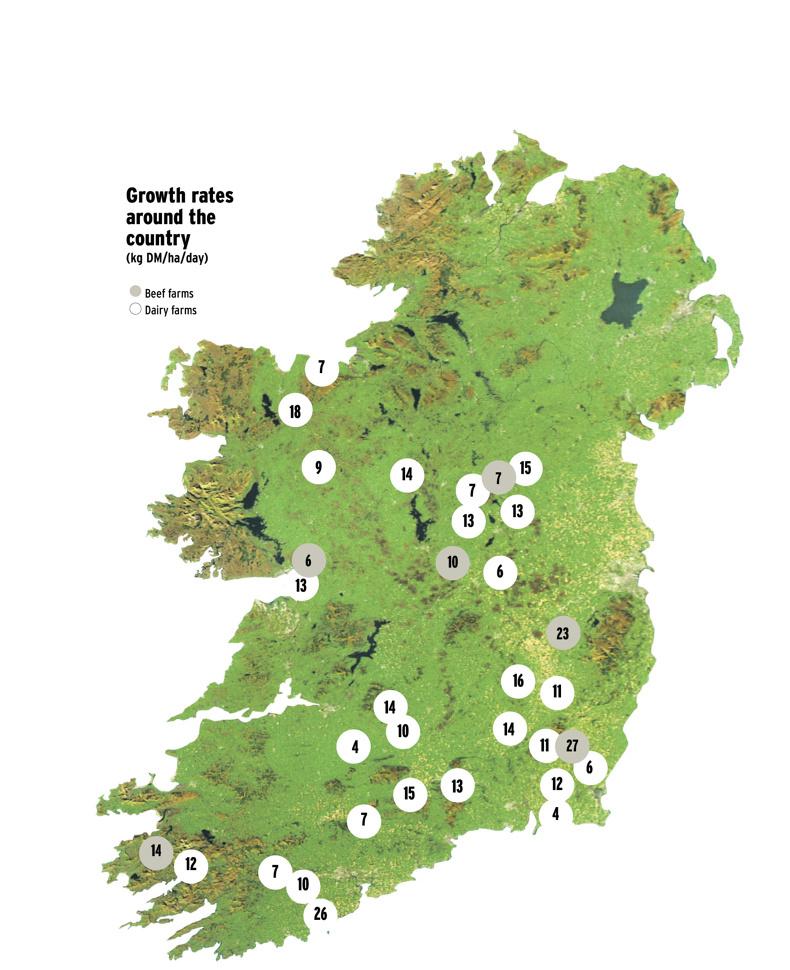Our measuring farms across the country grew an average of 20kg DM/ha/day this week. However, most farmers have seen a mass return of stock to sheds, as ![]()
Looking ahead, the west and north of the island look set to have inherently drier weeks in store than the east and south. The advice is to check local forecasts and take things one day at a time. Land that gets a couple of days to dry out may hold potential for on/off grazing in the coming days.
Some laugh at the prospect of this, but the reality is that cattle are making more money for us at grass than in the shed. Successful beef farms in this country are where they are because they get as much grass into their animals’ diets as possible.
Cattle going to grass hungry for three hours will eat half of their total daily intake in that period. Yearlings are ideal candidates for this.
Obviously spring-calving farms will be feeling the pressure at the moment, as the weather has been unsuitable for getting calves out. Those with sheltered “nursery” paddocks can count themselves very lucky.
Many farmers around the country are reporting that breaking point is approaching in terms of cow and calf indoor accommodation.
Cleanliness is absolutely vital here. If at all possible, the calf needs the facility to get away from the cow to its own clean, creep area. If it’s not a reality, bed, bed and bed again.
Those looking for advice on spring grazing – both beginner and advanced grassland managers – should look to attend some of the Teagasc Grass 10 farm walks currently running. On the beef side, the next walk is scheduled for tomorrow (Friday) in Lixnaw, county Kerry.
Mike Dillane, who’s featured on this page, was the most successful farmer in the BETTER farm programme from a financial point of view. Yet he began the programme with one of the heaviest farms. He now gets cattle to grass in February and grazes some of his paddocks 11 times in a year.

Crookedwood, Co Westmeath
Average farm cover 1088 kg DM/ha
There’s an average of almost 8.5cm of grass across my whole farm at present. It’s waving in the wind and we can do nothing but look out at it.
Good weather back in January allowed me to get all my slurry out and spread 25 units of nitrogen (urea) on the non-slurry ground. I had cows out but brought them in last Friday.
The weekend was a disaster: there are fields in the locality flooded that have never been before. I normally get cattle out in mid-February and this will be the first year in four that I couldn’t.
Calving is going very well, with 70% calved in the first three weeks of calving and just two needing assistance – one with a leg back. At one point we got seven calves in 30 hours. I work off-farm and have a remote camera on my smartphone – it’s a fantastic job.
This will be my first year finishing bulls on the grid and at present my yearlings weigh 560kg, which I’m told is well ahead of target.

Lixnaw, Co Kerry
Average farm cover 882kg DM/ha
We got a massive response to nitrogen and slurry here. Since 23 January, when I spread my slurry, some of my paddocks have grown almost 20kg DM/ha/day. Getting it eaten is a challenge at present but it’s there, in the bank for when I can get to it.
My 14-month-old heifers are grazing on/off at present – they weighed 455kg last Saturday. I let them stand in the yard for three to four hours to settle them and then give them a small block in the paddock. They go in hungry and the damage is surprisingly limited. However, with the weekend deluges there was more damage than I’d like done to a paddock on Sunday, and I didn’t get out at all on Monday. Normally they’re out full-time by 20 February here.
I would like to invite all interested farmers to my farm walk on Friday. It kicks off at midday. It will focus on grassland management and is a part of the Grass 10 initiative. Hopefully I will have some cattle out for it!

Derrypatrick Herd, Co Meath
Average farm cover 870kg DM/ha
Cattle remain housed due to poor ground conditions and increased rainfall. On/off grazing isn’t an option here due the heavy nature of the farm. On a positive note, there was no damage to the soil structure last autumn, which puts us in a favourable position to maximise grass utilisation and growth when grazing commences.
Soil samples returned this week and revealed a large number of paddocks are low in P and K. Despite this, the Derrypatrick farm grew 13t DM/ha in 2016. Animal numbers and concentrate inputs across the whole of Grange have resulted in restrictions on spreading chemical P over the last number of years. However, this restriction won’t be as severe this year and we will begin working on improving our soil fertility.
We currently have 30% of cows calved after three weeks of calving. Cows that calved in the first 10 days of the calving season have been placed on slats with a creep area for calves and have settled well.

Newford Herd, Co Galway
Average farm cover 964kg DM/ha
In all, 61% of the Newford Suckler Herd has now calved within three weeks – the first calf born was on 2 February. There are no major problems to report so far. In terms of numbers, 65 cows have calved with 68 live calves (four sets of twins and one mortality). This compares to only 18 cows calved this time last year. The average birth weight thus far has been 42kg.
Recent rainfall has put paid to our grazing plans, and the pressure is beginning to build, with all animals rehoused. Around 16% of the farm had been grazed before the yearlings returned to shed. Between 24 and 26 February we recorded 25mm of rainfall here. Parts of the farm were underwater for a period during the heaviest rain. Thankfully, work on converting an old sheep handling unit has been completed and the facility is now housing 20 cows and calves.
Lime is being applied to the slats to reduce infection levels for cows that are waiting to calve.
Read more
Grass+ dairy: bad weather makes grazing difficult
Our measuring farms across the country grew an average of 20kg DM/ha/day this week. However, most farmers have seen a mass return of stock to sheds, as ![]()
Looking ahead, the west and north of the island look set to have inherently drier weeks in store than the east and south. The advice is to check local forecasts and take things one day at a time. Land that gets a couple of days to dry out may hold potential for on/off grazing in the coming days.
Some laugh at the prospect of this, but the reality is that cattle are making more money for us at grass than in the shed. Successful beef farms in this country are where they are because they get as much grass into their animals’ diets as possible.
Cattle going to grass hungry for three hours will eat half of their total daily intake in that period. Yearlings are ideal candidates for this.
Obviously spring-calving farms will be feeling the pressure at the moment, as the weather has been unsuitable for getting calves out. Those with sheltered “nursery” paddocks can count themselves very lucky.
Many farmers around the country are reporting that breaking point is approaching in terms of cow and calf indoor accommodation.
Cleanliness is absolutely vital here. If at all possible, the calf needs the facility to get away from the cow to its own clean, creep area. If it’s not a reality, bed, bed and bed again.
Those looking for advice on spring grazing – both beginner and advanced grassland managers – should look to attend some of the Teagasc Grass 10 farm walks currently running. On the beef side, the next walk is scheduled for tomorrow (Friday) in Lixnaw, county Kerry.
Mike Dillane, who’s featured on this page, was the most successful farmer in the BETTER farm programme from a financial point of view. Yet he began the programme with one of the heaviest farms. He now gets cattle to grass in February and grazes some of his paddocks 11 times in a year.

Crookedwood, Co Westmeath
Average farm cover 1088 kg DM/ha
There’s an average of almost 8.5cm of grass across my whole farm at present. It’s waving in the wind and we can do nothing but look out at it.
Good weather back in January allowed me to get all my slurry out and spread 25 units of nitrogen (urea) on the non-slurry ground. I had cows out but brought them in last Friday.
The weekend was a disaster: there are fields in the locality flooded that have never been before. I normally get cattle out in mid-February and this will be the first year in four that I couldn’t.
Calving is going very well, with 70% calved in the first three weeks of calving and just two needing assistance – one with a leg back. At one point we got seven calves in 30 hours. I work off-farm and have a remote camera on my smartphone – it’s a fantastic job.
This will be my first year finishing bulls on the grid and at present my yearlings weigh 560kg, which I’m told is well ahead of target.

Lixnaw, Co Kerry
Average farm cover 882kg DM/ha
We got a massive response to nitrogen and slurry here. Since 23 January, when I spread my slurry, some of my paddocks have grown almost 20kg DM/ha/day. Getting it eaten is a challenge at present but it’s there, in the bank for when I can get to it.
My 14-month-old heifers are grazing on/off at present – they weighed 455kg last Saturday. I let them stand in the yard for three to four hours to settle them and then give them a small block in the paddock. They go in hungry and the damage is surprisingly limited. However, with the weekend deluges there was more damage than I’d like done to a paddock on Sunday, and I didn’t get out at all on Monday. Normally they’re out full-time by 20 February here.
I would like to invite all interested farmers to my farm walk on Friday. It kicks off at midday. It will focus on grassland management and is a part of the Grass 10 initiative. Hopefully I will have some cattle out for it!

Derrypatrick Herd, Co Meath
Average farm cover 870kg DM/ha
Cattle remain housed due to poor ground conditions and increased rainfall. On/off grazing isn’t an option here due the heavy nature of the farm. On a positive note, there was no damage to the soil structure last autumn, which puts us in a favourable position to maximise grass utilisation and growth when grazing commences.
Soil samples returned this week and revealed a large number of paddocks are low in P and K. Despite this, the Derrypatrick farm grew 13t DM/ha in 2016. Animal numbers and concentrate inputs across the whole of Grange have resulted in restrictions on spreading chemical P over the last number of years. However, this restriction won’t be as severe this year and we will begin working on improving our soil fertility.
We currently have 30% of cows calved after three weeks of calving. Cows that calved in the first 10 days of the calving season have been placed on slats with a creep area for calves and have settled well.

Newford Herd, Co Galway
Average farm cover 964kg DM/ha
In all, 61% of the Newford Suckler Herd has now calved within three weeks – the first calf born was on 2 February. There are no major problems to report so far. In terms of numbers, 65 cows have calved with 68 live calves (four sets of twins and one mortality). This compares to only 18 cows calved this time last year. The average birth weight thus far has been 42kg.
Recent rainfall has put paid to our grazing plans, and the pressure is beginning to build, with all animals rehoused. Around 16% of the farm had been grazed before the yearlings returned to shed. Between 24 and 26 February we recorded 25mm of rainfall here. Parts of the farm were underwater for a period during the heaviest rain. Thankfully, work on converting an old sheep handling unit has been completed and the facility is now housing 20 cows and calves.
Lime is being applied to the slats to reduce infection levels for cows that are waiting to calve.
Read more
Grass+ dairy: bad weather makes grazing difficult










 This is a subscriber-only article
This is a subscriber-only article
















SHARING OPTIONS: